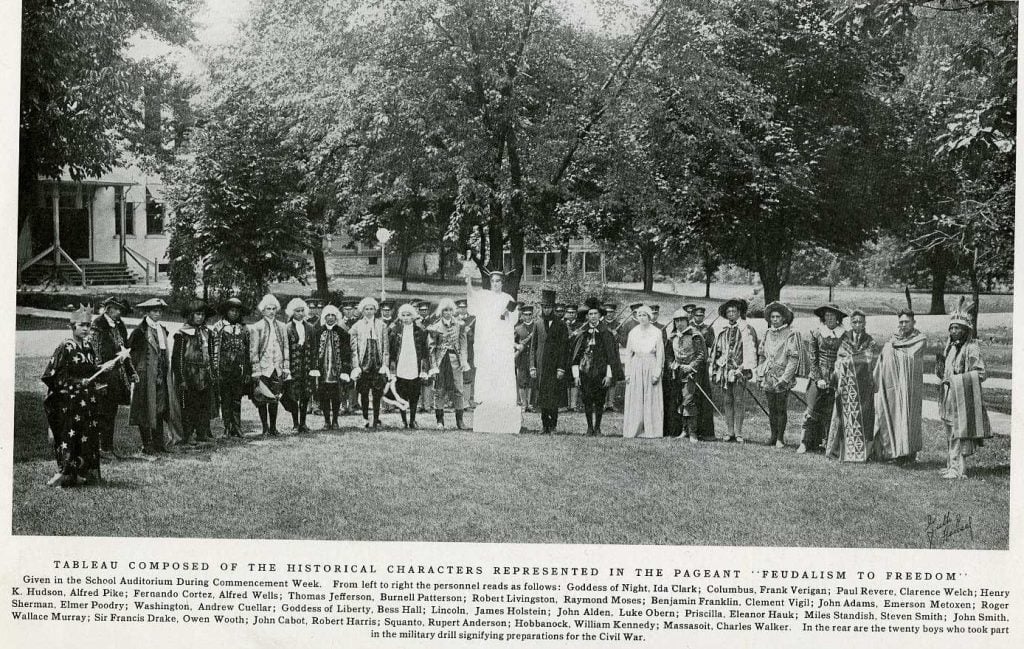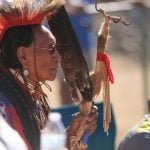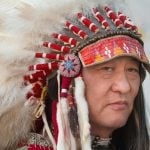The Indian Rights Association

During the late 19th century, non-Indians formed a number of groups to deal with the “Indian Problem.” In 1882 the Indian Rights Association was formed in Philadelphia. This group felt that Indians were capable of assuming full U.S. citizenship. They sought the extension of American law and legal rights to Indians and the abolishment of the protective and paternalistic practices of the Bureau of Indian Affairs. Clause II of their constitution states:
“The object of this Association shall be to secure to the Indians of the United States the political and civil rights guaranteed to them by treaty and statues of the United States and such as their civilization and circumstances may justify.”
The basic underlying beliefs of the Indian Rights Association were: (1) farming is superior to hunting; (2) alcohol is evil; (3) idleness is the ultimate evil; and (4) Christianity is the cure and therefore conversion to Christianity should be a key element in Indian policies.
The group’s founder, Herbert Welsh, wrote in 1882:
“When this work shall be completed the Indian will cease to exist as a man, apart from other men, a stumbling block in the pathway of civilization; his empty pride of separate nationality will have been destroyed, and in its place the greater blessings which he or his friends could desire will be his, – an honorable absorption into the common life of the people of the United States.”
In 1884, the Indian Rights Association opened an office in Washington, D.C. to act as a lobbyist group with Congress and the Indian Office. It became a fairly influential lobbying group. Their investigative field trips gave them an edge in influencing federal legislation regarding Indian affairs. For the next forty years, the Indian Rights Association would be the organization which American Indians looked to for help and protection. Non-Indians used them as a reliable source of information about Indian conditions and concerns.
Some examples of Indian Rights Association Efforts:
In 1895, two Sioux Indian police-Straight Head and Scares-the-Hawk-were arrested for killing a non-Indian who had resisted arrest on the Cheyenne River Reservation in South Dakota two years earlier. The Indian Rights Association paid for an attorney to defend the two. The two were found guilty. The Indian Rights Association’s attorneys appealed and the Indians were eventually released from prison.
In 1901, the Indian Rights Association took up the cause of the Havasupai and protested the establishment of the Grand Canyon Forest Reserve on their traditional winter range. They wrote to the Secretary of the Interior:
“The authorities in charge of the Grand Cañon Forest Reserve seek to deprive the Indians of the privilege of crossing the Forest Reserve, and have notified the official in charge of the Havasupai Indians that they should not be allowed to trespass upon or roam over said reserve.”
In 1902, the Indian Rights Association warned:
“The present tendency of Congress to disregard the solemn rights guaranteed to the Indian by treaty is alarming.”
At the Pawnee Indian School, the superintendent disciplined Virginia Weeks, an 18-year old Pawnee who is described as frail, by first beating her with a yard stick and then with a strap. The beating continued until she agreed to repeat his words of apology to some laundry workers. This incident was exposed by the Indian Rights Association in 1903 and the superintendent resigned from Indian Service.
In 1903, the Indian Rights Association charged that federal court officials in Oklahoma had conspired with land companies in the sale of Indian lands. The charges included the fact that the attorney who represented the tribes was also a stockholder and attorney for companies which were being sued by the Indians. The Department of the Interior claimed that the charges were the creation of yellow journalists and troublemakers. A number of clerks were assigned to investigate those involved with the Indian Rights Association in an effort to damage their reputations.
Nearly every high-ranking Interior Department official in Oklahoma had stock in the land companies. Furthermore, most of them were officers and directors in the companies. A subsequent government investigation revealed some improprieties and those involved received mild punishments. Court officials with connections to the land companies quickly severed their ties with these companies.
On the Navajo reservation in 1907, the Indian agent ordered Navajo children to be sent to a boarding school in Shiprock, New Mexico. Byalille (also spelled Bai-a-lil-le), an influential medicine man, openly defied the order. He felt that putting children in school was a way of killing them. Cavalry troops surrounded Byalille’s camp, killed two Navajo, and took several men prisoner. The Indian agent recommended that Byalille and one other man be sentenced to ten years hard labor and that seven others be sentenced to two years. The Commissioner of Indian Affairs concurred and the nine prisoners were sent to Fort Huachuca, Arizona without having a trial. The handling of the case was protested by the Indian Rights Association and the men were finally released in 1909. Under the precedents established by earlier court cases, Byalille should not have been arrested at all.
The End:
With the election of Franklin Roosevelt as President and the appointment of John Collier as Commissioner of Indian Affairs, the federal American Indian policy changed radically. With this, the role and impact of the Indian Rights Association lessened. While the organization closed its Washington, D.C. office in 1934, it remained active until 1994. It was involved with the Seneca and their concerns over the Kinzua dam in the 1950s and 1960s and with helping the Pequots regain some of their land in the 1970s.



